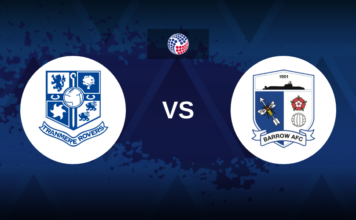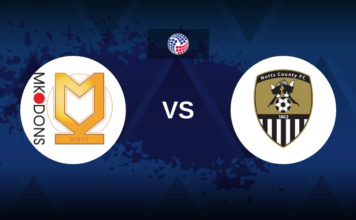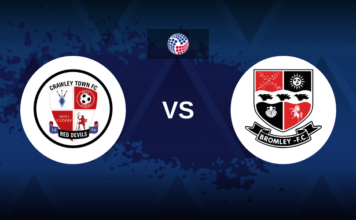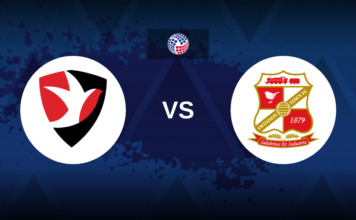In the dynamic world of football, even the strongest teams harbor weaknesses that can turn the tide of a match or a season. While some weaknesses are glaringly obvious, others lurk beneath the surface, waiting to be exploited. In this article, we delve into the top 10 formidable football teams with an Achilles’ heel, examining how these weaknesses affect their gameplay, tactics, and overall performance on the pitch.
10. Germany’s Striker Dilemma
Since Miroslav Klose’s aging phase and his subsequent retirement, Germany has struggled to find a reliable central striker. The team has tried several options, including veterans like Thomas Müller and Mario Gomez, as well as younger players like Timo Werner and Serge Gnabry, but none have quite filled the void. Werner, despite showing promise, failed to score in the World Cup, which contributed to Germany’s shocking group stage exit. The German national team’s reliance on former winger Müller and other makeshift solutions in the striker role has led to a series of underwhelming performances, including a dry loss to France and a humiliating exit from the World Cup group stage with Mexico, Sweden, and South Korea. The issue persists with the inclusion of Dortmund’s young talent Youssoufa Moukoko in the squad for the Qatar World Cup. Still, even though the Bundesliga team created plenty of scoring opportunities, they were unable to progress beyond the group stage, highlighting a persistent weakness in their lineup.
9. Manchester City’s Center Back Conundrum
In Pep Guardiola’s early years at Manchester City, the departure of Vincent Kompany due to frequent injuries created a challenge for the team’s defense. Maneuvers such as including John Stones, purchasing Aymeric Laporte, and deploying midfield veteran Fernandinho in defense were tried. Despite significant investment, none initially provided the stability desired. It was not until Ruben Dias’ arrival that City’s defense stabilized, with Stones’ performance notably improving alongside the Portuguese. The acquisition of Dias proved as transformative for City as Virgil van Dijk’s was for Liverpool, concluding a costly and long-term search for a reliable center-back.
8. Barcelona’s Quest for a Central Midfielder
After the departure of club legend Andres Iniesta, Barcelona faced an ongoing challenge to find the right mid to integrate into the iconic 4-3-3 scheme successfully. They cycled through names like Sergi Roberto, Philippe Coutinho, Rafinha, Arturo Vidal, and Arthur Melo, none of whom could consistently fulfill Iniesta’s role. Even the experienced Ivan Rakitic couldn’t fully compensate for the loss. It wasn’t until the arrivals of Pedri, Gavi, and the acquisition of Frenkie de Jong that Barcelona’s midfield began to show signs of stability, signaling a potential end to the long-standing problem of finding the ideal central midfielder for their system.
7. Manchester United’s Right-Back Issue
The right-back position has been a point of contention for Manchester United for years. Post-Gary Neville, Antonio Valencia adapted to the role but as he aged, the spot weakened again. The club attempted various solutions, including buying Matteo Darmian and Diogo Dalot, and even moving versatile players such as Ashley Young to the position. In 2019, in an effort to shore up the defense, United invested heavily in Aaron Wan-Bissaka. However, Wan-Bissaka’s limited offensive contribution and current injury issues have resurfaced the debate about the best option for the right-back position, with Dalot playing and rumors about United’s intention to sell Wan-Bissaka and seek another backup right-back.
6. Bayern’s Wing Revolution
Since the retirement of Franck Ribéry and Arjen Robben in 2019, Bayern Munich has struggled to find their successors on the wings. Despite both players grappling with injuries in their final years, they left big shoes to fill. Attempts were made to replace them, including the signing of Mario Götze from rival Borussia Dortmund for €37 million in 2013. Götze’s performance for Bayern did not reach his previous heights, and he was used in various attacking positions without solidifying his place before returning to Dortmund two years later. Douglas Costa, bought from Shakhtar Donetsk, was another attempt that failed due to his injury issues. Bayern even tried James Rodríguez on loan from Real Madrid hoping he could adapt to the wings, but he was not retained permanently. Eventually, Serge Gnabry, initially given a season at Hoffenheim, emerged as a key player for Bayern. However, the true wing revolution came with the acquisition of Leroy Sané. Despite an initial setback due to a serious injury, Sané eventually developed into a leading figure for the team, forming a formidable partnership with Gnabry. This journey exemplifies Bayern’s challenging but ultimately successful search for new wing prowess.
5. PSG’s Left-Back Quest
Paris Saint-Germain has faced a recurring difficulty in finding a solid left-back since Maxwell’s departure in 2017. An array of players including Yuri Berchiche, Juan Bernat, and Layvin Kurzawa have been tested in this position. Berchiche, surprisingly signed from Real Sociedad, didn’t have a standout career previously, and despite being acquired at a low cost, he didn’t impress enough in Paris. The club also relied on PSG academy graduates like Stanley N’Soki and Colin Dagba but neither secured the spot. During the 2019-20 season, youth product Mitchel Bakker from Ajax’s academy got his chance but didn’t establish himself as the main left-back. Only with the signing of Portuguese young talent Nuno Mendes for €38 million did PSG see a glimpse of stability. Mendes had an impressive season but suffered a serious injury which sidelined him for the remainder of the year, leaving PSG yet again searching for solutions at left-back, including adapting central defenders to fill the position.
4. Dutch Striker Conundrum
The Netherlands has been seeking a top-class central forward since the departure of legends like Robin van Persie and Klaas-Jan Huntelaar. These prolific strikers were considered worthy heirs to icons such as Marco van Basten and Ruud van Nistelrooy. However, post-2014 World Cup, a lack of a genuine number 9 was felt. Various players were tried, including Memphis Depay, who ideally plays wide, and Vincent Janssen with limited success. Even players like Luuk de Jong or Steven Berghuis, mostly known for playing in different positions, got their chance in the center forward role. The search continued with players like Wout Weghorst and Donyell Malen, who were tested at the 2022 World Cup but couldn’t prove to be the definitive solution. Cody Gakpo, primarily a winger, was also fielded as a central striker showing potential to solve the long-standing issue. This persistent struggle underscores the Dutch national team’s need to fill a significant gap left by their past goal-scoring heroes.
3. Arsenal’s Goalkeeping Woes
Since the season of 2007-2008, Arsenal has faced an ongoing dilemma with their goalkeeping position. Manuel Almunia, though initially the first choice, failed to galvanize his teammates or scare opponents. Arsene Wenger faced a challenging choice, with Almunia’s competitors including Łukasz Fabiański and Wojciech Szczęsny, as well as Vito Mannone, who mostly played due to the injuries of Almunia and Fabiański. Szczęsny was still too green to handle 40 games a season, and World Champion Emiliano Martínez was yet to shine. Colombian goalkeeper David Ospina also struggled to cement his position. Finally, in 2015, the club signed the seasoned Petr Čech, who at 30 years old represented a reliable, albeit short-term solution following eight years of inconsistency. Ironically, Arsenal’s goalkeeping was resolved years later with the emergence of Martínez, who had been under their radar all along.
2. Liverpool’s Goalkeeper Evolution
The goalkeeper spot became Liverpool’s Achilles’ heel for about five years, especially after Pepe Reina’s performance declined in his last season, recording only a 67% save rate. Simon Mignolet then reluctantly became the first choice for four seasons, as it became clear he was not elite; errors piled up and media pressure intensified. Manager Jürgen Klopp eventually decided to rotate his goalkeepers, leading to the discovery of Loris Karius, who committed errors even before the infamous Champions League final. The club acknowledged the need to take radical action to solve their goalkeeper problem after Karius’s blunder in the decisive match. Mignolet was left without even a backup role, and in the summer of 2018, Liverpool spent over 60 million euros, unhesitatingly, to secure Brazil’s starting goalkeeper, Alisson Becker. This investment paid off long ago, with Alisson now an integral part of a new era at Liverpool, evidenced by a contract that ensures his presence at the club until at least 2027.
1. The Forwards’ Riddle of Chelsea and Atlético
Both Chelsea and Atlético Madrid have experienced prolonged periods without top-quality strikers, despite both clubs once boasting superstar attackers. In Chelsea’s case, the likes of Radamel Falcao, Claudio Pizarro, Diego Costa, Álvaro Morata, Gonzalo Higuaín, Fernando Torres, and Andriy Shevchenko have all had stints varying from underwhelming to outright failures. The club has also seen the recent unsuccessful ventures of Timo Werner, Tammy Abraham, and Romelu Lukaku. Atlético, under coach Diego Simeone, faced troubles not just with a central striker but also general effectiveness upfront. Names like Luciano Vietto, Jackson Martínez, Kevin Gameiro, and Nikola Kalinić struggled to make an impact. Even attempts to reintegrate past successful players, such as Torres and Costa, didn’t pay off, with the latter fading upon his return and the former seeing a move of symbolic significance more than performance. It was only with the arrival of Luis Suárez in the 2020-2021 season, which led to a championship, that Atlético briefly overcame their forward conundrum. To realize Simeone’s vision for a formidable attacking Atlético, they might need to acquire another star striker, preferably younger, to kickstart a new glorious chapter.







